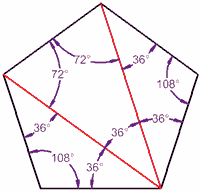Chapter 1
Principles and standards for School Mathematics (2000) is designed to provide guidance for teacher and other leaders in pre-12 mathematics education. One of the most important features of the principles and standards for school mathematics is the articulation of 6 principle fundamentals to high quality mathematics education.
Equity - High expectation for all students.
* Curriculum - Students must be helped to see that mathematics is an integrated whole, not a collection of isolated bits and pieces.
* Teaching - "Teachers" action are what encourages students to think, question, solve problems, and discuss their ideas, strategies and solutions
* Learning - Students must learn with understanding
* Assessment - Assessment must be done to students to guide and enhance their learning.
* Technology - This is essential n teaching and learning mathematics, its influences the mathematics that is taught and enhances student's learning.
Content standards includes Problem solving, Reasoning and Proof, Communication, Connection and Representation.
Reflecting... on Chapter 1....
"Being a teacher is the most important job on the planet, and mathematics opens doors to all kinds of options for students" -Cathy Seelay (NCTM Past-President). Like the quote states, Mathematics opens doors to all kinds of options for students. We as teachers need to have profound, flexible and adaptive knowledge of mathematics content as to enhance students' learning.
Chapter 2
Doing mathematics means generating strategies for solving problems, applying those approaches, seeing if they lead to solutions and checking to see if your answers make sense.
Features of a productive classroom includes:
1.
Ideas are the currency of the classroom
2.
Students have autonomy with respect to the methods used to solve problems.
3.
The classroom culture exhibits an appreciation for mistakes as opportunities to learn.
4.
The authority for reasonability and correctness in the logic and structure of the subject, rather than in the social statues of the participants.
Reflecting.... on Chapter 2... As teacher it is very important how we set up our classroom to encourage math learning. The games in the class should be interactive and fun for the children to learn. This not only benefit the children but it eases the teacher's load of 'having' to teach as the children are discovering math and learning math through these interactive games.
When it comes to teaching Maths teachers fail to look at the task analysis of a child. We simply do lesson plans according to the school's curriculum needs. But it is very important to look into the 1.teah content 2. skills 3. process before we proceed on with any lesson plan. As teachers because of time constrain of time, we give out answers to children too fast. But it is very important to give children the opportunity to figure out the problem.
As teacher, we need to give precise information on how parents can help their children in their studies.
As teacher, we need to REMEMBER: Don't explain, coach them and then saw them. Provide them as many opportunities as possible.
 Hi Dr Yeap,
Hi Dr Yeap,
 Of the suggested websites i like the Pick's theorem very much.
Of the suggested websites i like the Pick's theorem very much.